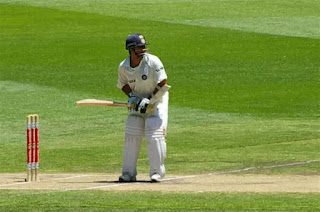Mastering the Perfect Cricket Batting Stance: A Comprehensive Guide
In the world of cricket, the batting stance is the very foundation upon which a player's success rests. It is the starting point of every glorious shot, every boundary, and every unforgettable innings. In this article, we delve deep into the art of the cricket batting stance, exploring the key elements that make it a vital aspect of a batsman's repertoire.
The Significance of a Proper Cricket Batting Stance
A cricket batting stance is not merely a formality; it's a strategic positioning that sets the stage for the batsman's performance. Here's why it's so crucial:
1. Balance and Stability
A well-crafted batting stance offers balance and stability. It allows the batsman to maintain control over their body weight, ensuring they are ready to move in any direction to respond to the bowler's delivery. Hold the Cricket Bat securely within this stance to be fully prepared for any shot.
2. Shot Execution
The stance is the launchpad for every shot a batsman plays. Whether it's a classic cover drive or a powerful hook shot, the stance determines the range of shots a batsman can effectively execute.
3. Judgment of Line and Length
A good stance enables a batsman to assess the line and length of the incoming delivery more accurately. This split-second advantage can be the difference between a brilliant shot and an unfortunate dismissal.
Elements of an Effective Batting Stance
Now that we've established the importance of a proper stance, let's break down the essential elements that make up an effective batting stance:
1. The Base
The foundation of a cricket batting stance lies in the position of the feet. The feet should be shoulder-width apart, ensuring stability and balance. The front foot should be pointing towards the bowler, while the back foot is perpendicular to the crease.
2. Grip
A correct grip on the handle of the bat is crucial. The top hand should be placed above the bottom hand, forming a "V" shape between the thumb and the index finger. This grip offers control and flexibility when playing shots.
3. Head Position
The head should be steady and level, with eyes focused on the bowler's hand as they release the ball. Maintaining eye contact with the ball allows for better judgment and quick decision-making.
4. Weight Distribution
The weight should be evenly distributed between both feet. This distribution allows the batsman to shift their weight easily in response to the ball's movement.
5. Flexibility
A good stance is not rigid; it allows for flexibility in movement. The batsman should be ready to adjust the stance slightly based on the line and length of the ball.
Also Read Unveiling the Best Alternatives to CricHeroes
Transition Words: Enhancing Clarity and Flow
Transition words are essential for a seamless reading experience. In this article, we've incorporated transition words to ensure that every point flows smoothly into the next. These words enhance clarity and readability, making it easier for you, the reader, to absorb the information.
In Conclusion
The cricket batting stance is not a one-size-fits-all concept. It varies from player to player based on their unique style and preferences. However, the fundamental principles discussed here serve as a solid foundation for any aspiring batsman.
Remember, mastering the art of the cricket batting stance takes practice and dedication. It's not just about physical positioning but also mental focus and adaptability. So, next time you step onto the cricket pitch, pay close attention to your stance; it might just be the key to unlocking your full potential as a batsman.




Comments
Post a Comment